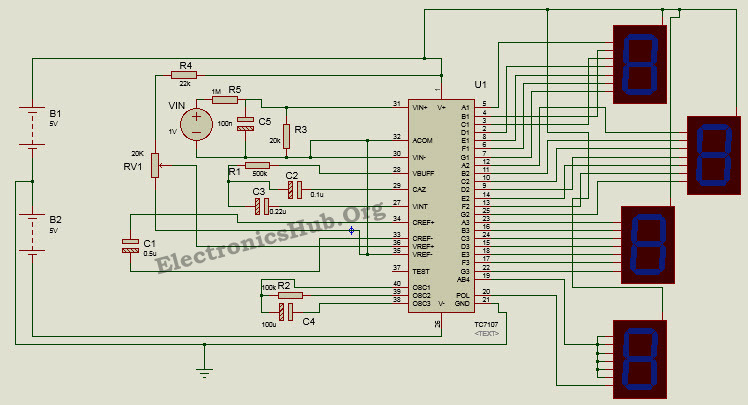History of Electrical Engineering
Benjamin Franklin in 1752, was the first man who tried to utilize electricity from clouds by flying a kite during a stormy night. In 1780, Luigi Galvani was surprised when he saw that a dead frog’s leg twisted when it was touched by a silver and copper stick. He misunderstood the actual reason, thinking that the electricity came from the leg itself, and referred it as animal electricity. After development in 1800 by Alessandro Volta of the voltaic cell as a simple method of producing electricity from a chemical reaction, an actual revolution occurred in this field and the history of electrical engineering totally changed from this time.


It is needless to say that most of the theories, on which this field of engineering is built, are related to electromagnetism. The law of electromagnetism was invented by Michael Faraday in the year 1831. This law is popularly known as Faraday’s law of electromagnetic induction. The relation between current andvoltage in a conductor was already stated by Georg Ohm, in 1827. This is Ohm’s law . Based on these two theories development of electrical technology began. In his experiment with electromagnetic induction, Michael Faraday designed the most basic model of an electrical rotating machine. In 1873, James Clerk Maxwell, published his famous article on magnetism and electricity.


It is needless to say that most of the theories, on which this field of engineering is built, are related to electromagnetism. The law of electromagnetism was invented by Michael Faraday in the year 1831. This law is popularly known as Faraday’s law of electromagnetic induction. The relation between current andvoltage in a conductor was already stated by Georg Ohm, in 1827. This is Ohm’s law . Based on these two theories development of electrical technology began. In his experiment with electromagnetic induction, Michael Faraday designed the most basic model of an electrical rotating machine. In 1873, James Clerk Maxwell, published his famous article on magnetism and electricity.
Werner von Siemens the founder of the German multinational engineering and electronic company Siemens, made great contributions in the early days of the history of electrical engineering. He was a great inventor and developer. Another great contributor to the electrical engineering was Sir Thomas Edison. We all know him as inventor of electric light bulb in the year 1879. This invention was a revolution. He was also the builder of the first electrical supply network in the world.


Although there were so many developments and research works going on before 1882, the study of electricity was not recognized as a separate field of engineering. In that year electrical engineering was introduced as a separate branch of engineering by TU Darmstadt University Germany. This was the beginning of studying electrical engineering as a professional degree. In that very year Edison started the world’s first electric supply business at DC 110V. Initially, a total of 59 houses in Manhattan were connected to his network.


Although there were so many developments and research works going on before 1882, the study of electricity was not recognized as a separate field of engineering. In that year electrical engineering was introduced as a separate branch of engineering by TU Darmstadt University Germany. This was the beginning of studying electrical engineering as a professional degree. In that very year Edison started the world’s first electric supply business at DC 110V. Initially, a total of 59 houses in Manhattan were connected to his network.
Although, alternating current had already been developed in Europe in the year 1850 by Guillaume Duchenne, it was not yet commercially distributed. George Westinghouse, an American entrepreneur and engineer, finally came forward and financially supported the development of the AC power network. By the end of nineteenth century AC power transmission and distribution became popular and started dominating DC distribution systems.


After development of the distribution network, electricity reached consumers. After electricity reaches the consumer, it is utilized for operating different equipment run by electricity. Electrical engineering is also involved in developing such industrial and domestic equipment at the consumer end. Many scientists and engineers involved themselves in inventing and developing such equipment. A new window had been opened in history of electrical engineering.


After development of the distribution network, electricity reached consumers. After electricity reaches the consumer, it is utilized for operating different equipment run by electricity. Electrical engineering is also involved in developing such industrial and domestic equipment at the consumer end. Many scientists and engineers involved themselves in inventing and developing such equipment. A new window had been opened in history of electrical engineering.
In 1895, Nikola Tesla transmitted radio frequency signal across a distance of eighty kilometers and developed radio transmitters.
In 1897, the cathode ray tube was invented by Karl Ferdinand Braun and development of television technology began.
In 1902, Willis Carrier developed air conditioning machines.


In 1941, Konrad Zuse introduced the first form of programmable electromechanical computer.
In 1943, Tommy Flowers produced first prototype of programmable digital computer.
In 1946 Percy Spencer invented the microwave oven.
Every day there are new inventions and developments in electrical engineering and technology. The discussion is far from over. Here, we tried to give an overview only.
In 1897, the cathode ray tube was invented by Karl Ferdinand Braun and development of television technology began.
In 1902, Willis Carrier developed air conditioning machines.


In 1941, Konrad Zuse introduced the first form of programmable electromechanical computer.
In 1943, Tommy Flowers produced first prototype of programmable digital computer.
In 1946 Percy Spencer invented the microwave oven.
Every day there are new inventions and developments in electrical engineering and technology. The discussion is far from over. Here, we tried to give an overview only.
